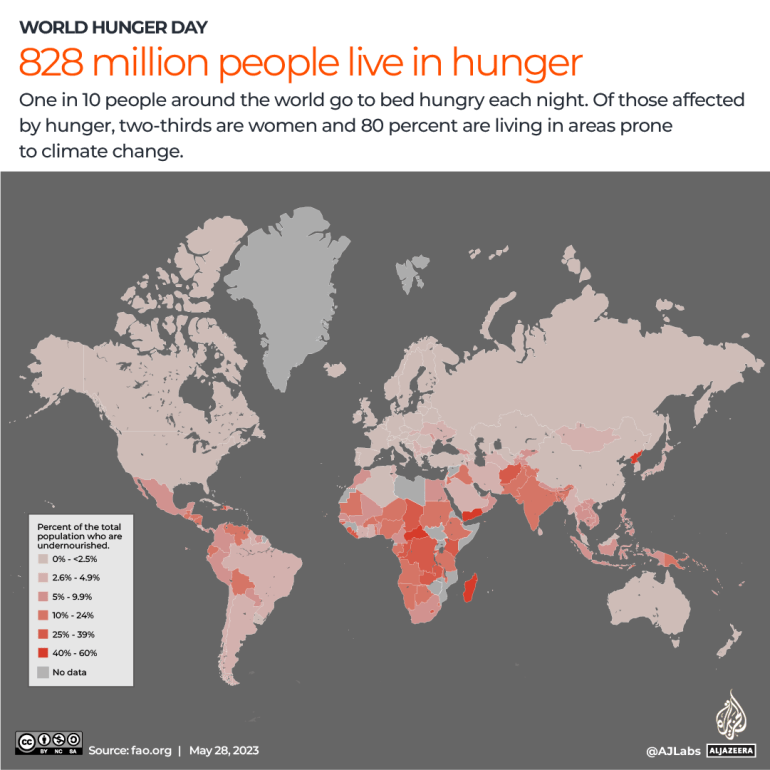As many as 828 million people – or 10 percent of the world’s population – go to bed hungry each night, 46 million more than the previous year, according to the United Nations Food and Agriculture Organization (FAO).
Of those affected by hunger, two-thirds are women and 80 percent live in areas prone to climate change.
To raise awareness about global hunger levels, The Hunger Project, a non-profit, designated May 28 as World Hunger Day.

Hunger is a debilitating state that occurs when the body is deprived of food for an extended period.
Prolonged periods of hunger can lead to health problems and can cause lifelong physical and cognitive damage, particularly among children.
Undernutrition extends beyond calorie intake to indicate deficiencies in energy and protein, as well as vital vitamins and minerals.
Following a decade of consistent decrease, global hunger has witnessed an upward trend in recent years. Between 2019 and 2021, the number of undernourished individuals increased by more than 150 million, primarily fuelled by conflicts, climate change, economic shocks and the COVID-19 pandemic.
The cost of food has also increased. Between 2019 and 2022, the FAO Food Price Index (FPI) – which measures the change in global prices of a basket of food products including sugar, meat, cereals, dairy and vegetable oil – increased from 95.1 points to 143.7 points.
“Even as global food commodity prices increased – the increases on the country level differ, as countries employ different policies,” says Monika Tothova, an economist in the FAO Trade and Markets division.
“Many countries, for example, employ consumer subsidies for selected products, fixing the price for consumers and sheltering them from fluctuations on the global markets – at the expense of the national budgets.”
The latest UN State of Food Security and Nutrition in the World (SOFI) report found that most of the world’s undernourished population lives in Asia where some 425 million people went hungry in 2021. However, the prevalence of hunger is highest in Africa, with 278 million affected that year.
The number of people experiencing acute food shortages, which measures a person’s inability to consume adequate food and, as a result, puts their lives or livelihoods in immediate danger, has increased for the fourth year in 2022, with 258 million people facing acute hunger, according to the 2023 edition of the Global Report on Food Crisis.
“Economic shocks have surpassed conflict as the primary driver of acute food insecurity and malnutrition in several major food crises,” Tothova says.
“Cumulative global economic shocks, including soaring food prices and severe disruptions to markets, undermine countries’ resilience and capacity to respond to food shocks.”
In 2022, the war between Russia and Ukraine – two of the biggest global producers of staple cereals, oilseeds and fertiliser – led to huge disruptions in international supply chains which pushed up the prices of grain, fertiliser and energy. This led to the global FPI reaching its highest level on record in 2022.
Projections for the future outlook of global hunger suggest that hunger will persist, with more devastating effects from extreme weather events.

